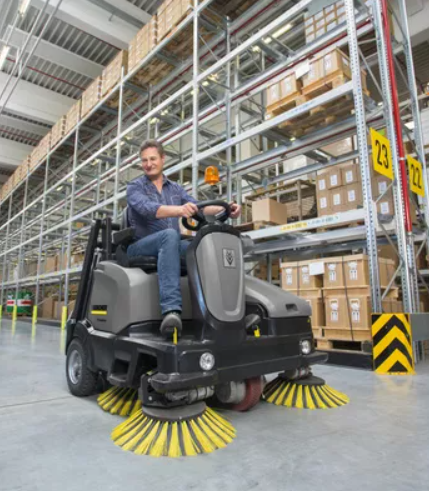
How to Reduce Dust in Your Warehouse for a Cleaner, Safer Environment
Dust can be a persistent problem in warehouses, leading to numerous issues such as product contamination, respiratory problems for workers, and general inefficiency in operations. While completely eliminating dust is challenging, there are several effective strategies that can significantly reduce dust levels and create a cleaner, safer working environment for everyone.
The Impact of Dust in the Warehouse
Warehouse dust is more than just an aesthetic concern. It is a mixture of harmful particles, including soot from machinery, mold spores, and debris from pests. These particles can cause serious health problems, from respiratory issues to allergic reactions, which makes managing dust crucial for both employee well-being and product quality. Fortunately, several best practices can help minimize dust in the warehouse and improve overall air quality.
Regular Cleaning: The First Step to Dust Control
One of the most effective ways to reduce dust is through consistent and thorough cleaning. It’s essential to establish a daily cleaning routine that involves all employees. Here are some steps to keep dust levels down:
- Employee Training on Cleaning Procedures: Employees should be educated on how to properly clean their work areas, especially in hard-to-reach spots that often collect dust. By identifying these areas and training workers to regularly clean them, dust buildup can be minimized.
- Assign Responsibility: Each employee should be accountable for cleaning their designated work area. This responsibility should be part of their daily tasks to ensure dust doesn’t accumulate.
- Supervision and Inspections: Supervisors play a key role in maintaining cleanliness. Regular inspections should be conducted to ensure that employees are consistently following cleaning protocols and addressing even the hardest-to-reach places.
Inconsistent cleaning habits are the primary cause of dust buildup in warehouses. By establishing a clear cleaning protocol and ensuring employees adhere to it daily, you can significantly reduce the amount of dust present.
Dust Suppression Systems for Large Warehouses
For warehouses with heavy dust challenges, implementing dust suppression systems can be a valuable solution. These systems are designed to actively reduce or remove dust particles in the air, although they tend to come with higher setup and maintenance costs. Here are some common types of dust suppression systems:
- Fogging Systems: These systems use a gentle mist of water to capture airborne dust. The mist binds with dust particles, causing them to fall to the ground. This method is often used in environments where dust poses a serious safety risk, such as grain facilities.
- Ventilation Systems: These systems use extractor fans to pull air through filters that trap dust before returning clean air to the warehouse. They are effective at keeping air clean and free of dust but can be expensive to operate and maintain.
- Partitioning Systems: In certain cases, partitions can prevent dust from moving between areas. Simple plastic sheet partitions are a cost-effective option for separating dusty zones from sensitive areas within a warehouse.
While these systems can be effective, their suitability depends on the type of warehouse. For instance, fogging systems may not be ideal for facilities with sensitive electronics or food storage due to the increased humidity they generate. In these cases, ventilation and partitioning might offer more practical solutions.
Reducing Dust from Wood Pallets
An often-overlooked source of dust in warehouses is the use of wood pallets. As wood pallets are used over time, they naturally degrade, creating dust and debris. The friction from heavy loads or machinery moving pallets can exacerbate this problem, releasing more dust into the air. To address this, warehouses should consider minimizing the use of wood pallets, particularly in environments where cleanliness is crucial.
Switching to plastic pallets can be an effective solution. Plastic pallets are more durable, less likely to break apart, and produce significantly less dust compared to their wooden counterparts. The smooth, uniform design of plastic pallets also means they are less likely to cause friction-induced dust when moved, improving the overall cleanliness of the warehouse environment.
Conclusion
Reducing dust in your warehouse is not only about improving the aesthetic of the facility but also about ensuring the health and safety of your employees and the integrity of your products. By implementing regular cleaning routines, using effective dust suppression systems, and switching to plastic pallets, warehouses can significantly reduce dust levels and create a cleaner, safer working environment. These efforts not only enhance warehouse efficiency but also contribute to long-term cost savings by maintaining better air quality and reducing product damage.